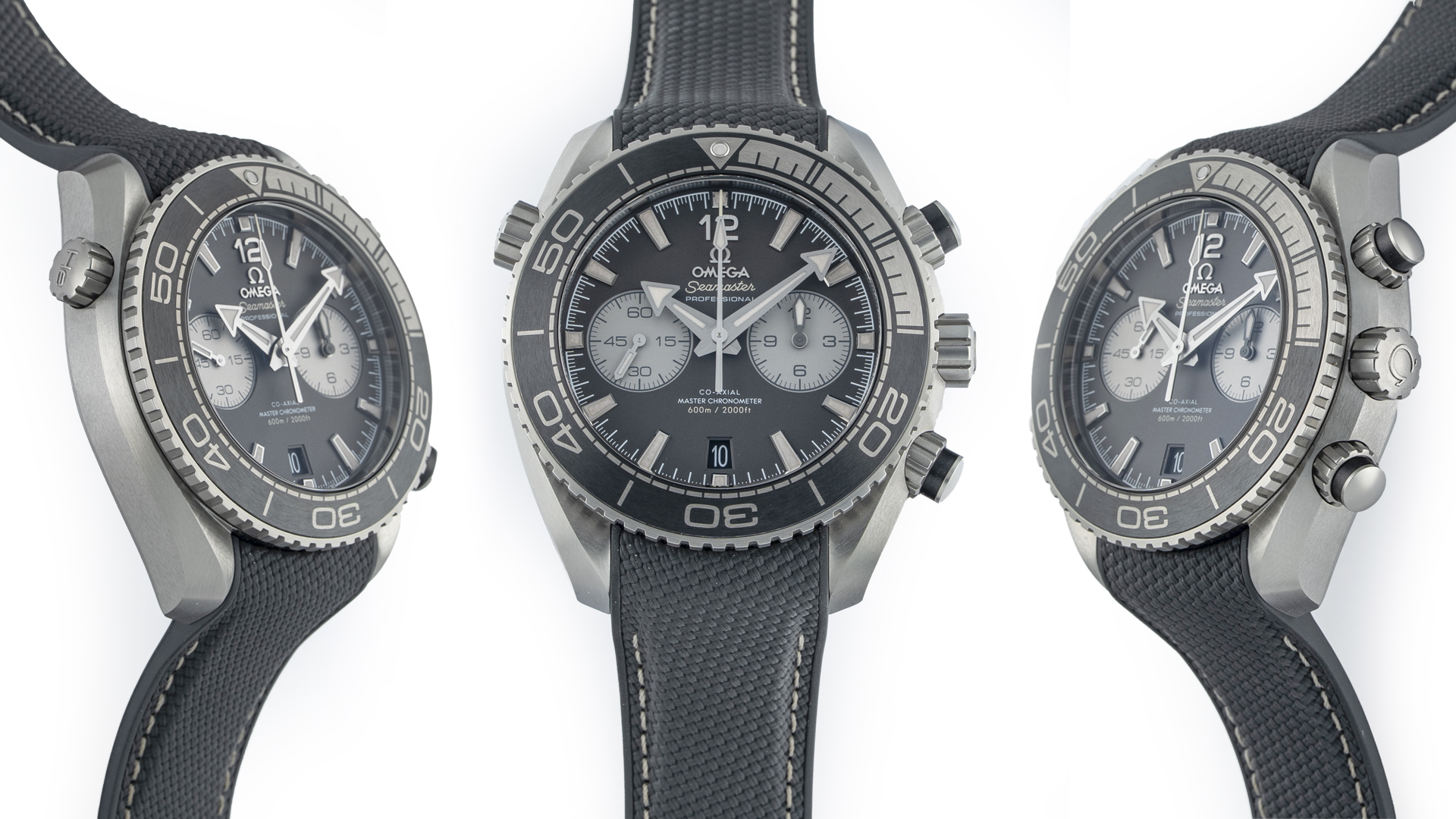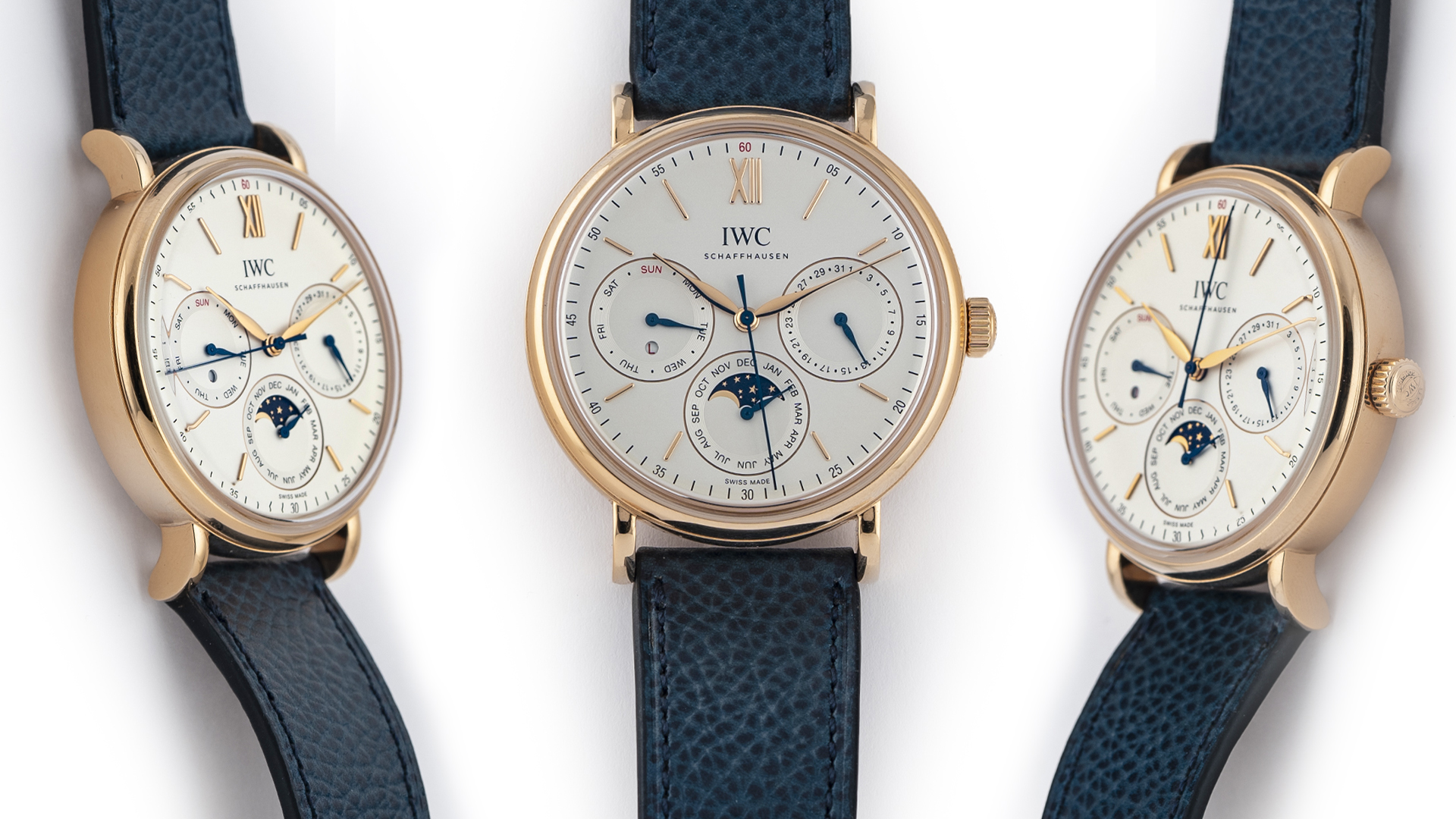Rolex Air-King 116900 vs. 126900: A Detailed Comparison
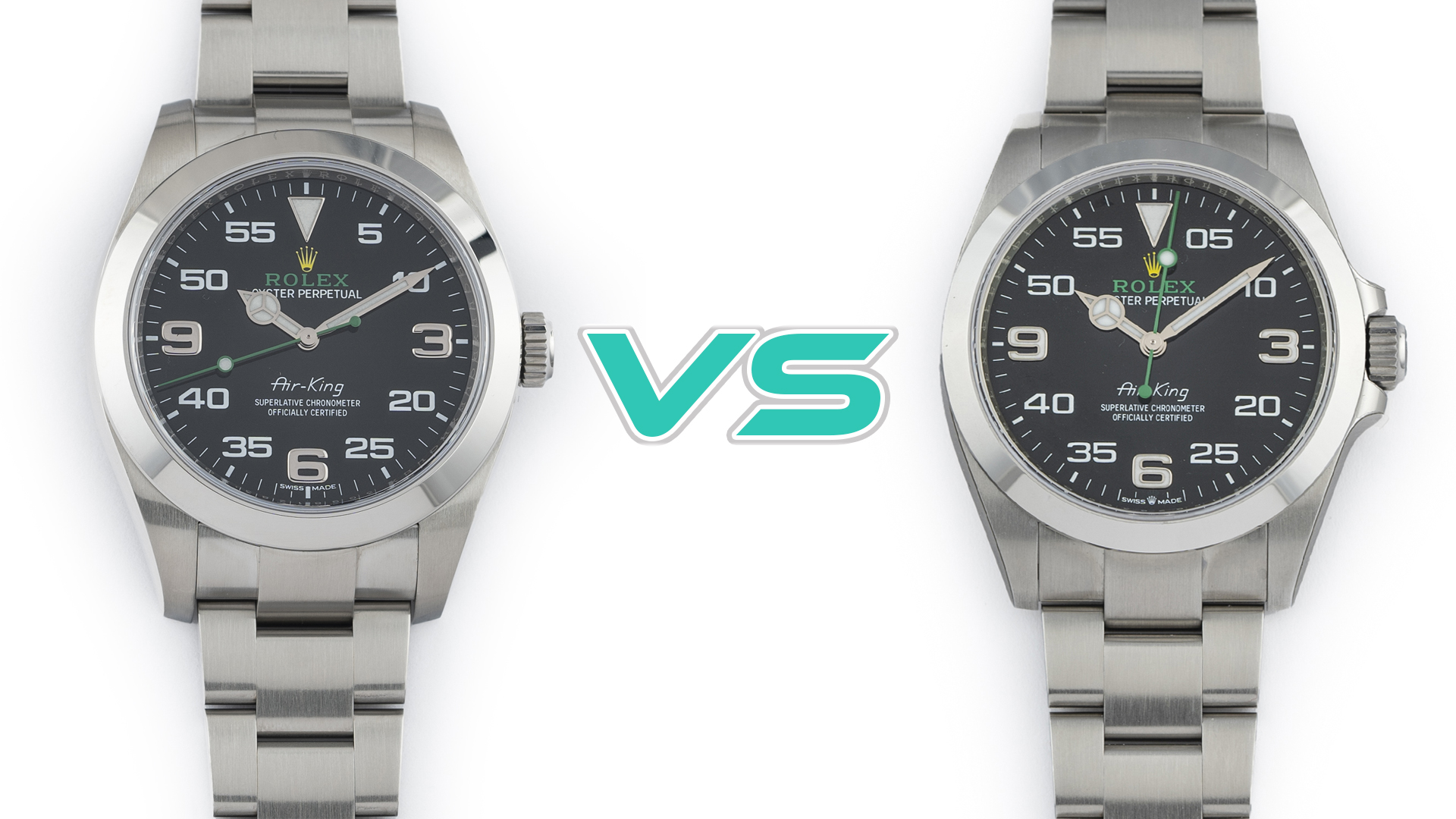
The Rolex Air-King has long been celebrated as a tribute to aviation, blending timeless design with cutting-edge technology. With the release of the Rolex Air-King 126900 in 2022, enthusiasts have been eager to understand how it stacks up against its predecessor, the Air-King 116900. Both models share the same 40mm Oystersteel case and aviation-inspired heritage, but subtle yet significant differences set them apart. In this blog, we’ll dive deep into the distinctions between the Rolex Air-King 116900 and 126900, covering design, movement, functionality, and more. Whether you’re a collector or a first-time buyer, this guide will help you decide which Air-King suits your style.
For more insights, check out our detailed reviews of the Rolex Air-King 116900 and Rolex Air-King 126900.
Table of Contents
A Brief History of the Rolex Air-King
Introduced in 1945 by Rolex founder Hans Wilsdorf, the Air-King was created to honor World War II pilots, particularly those who flew in the Battle of Britain. Known for its simplicity, legibility, and durability, the Air-King has evolved over decades while retaining its aviation-inspired roots. The 116900, launched in 2016, marked a bold redesign with a Bloodhound-inspired dial, while the 126900 refined this vision in 2022, introducing modern upgrades for today’s watch enthusiasts.
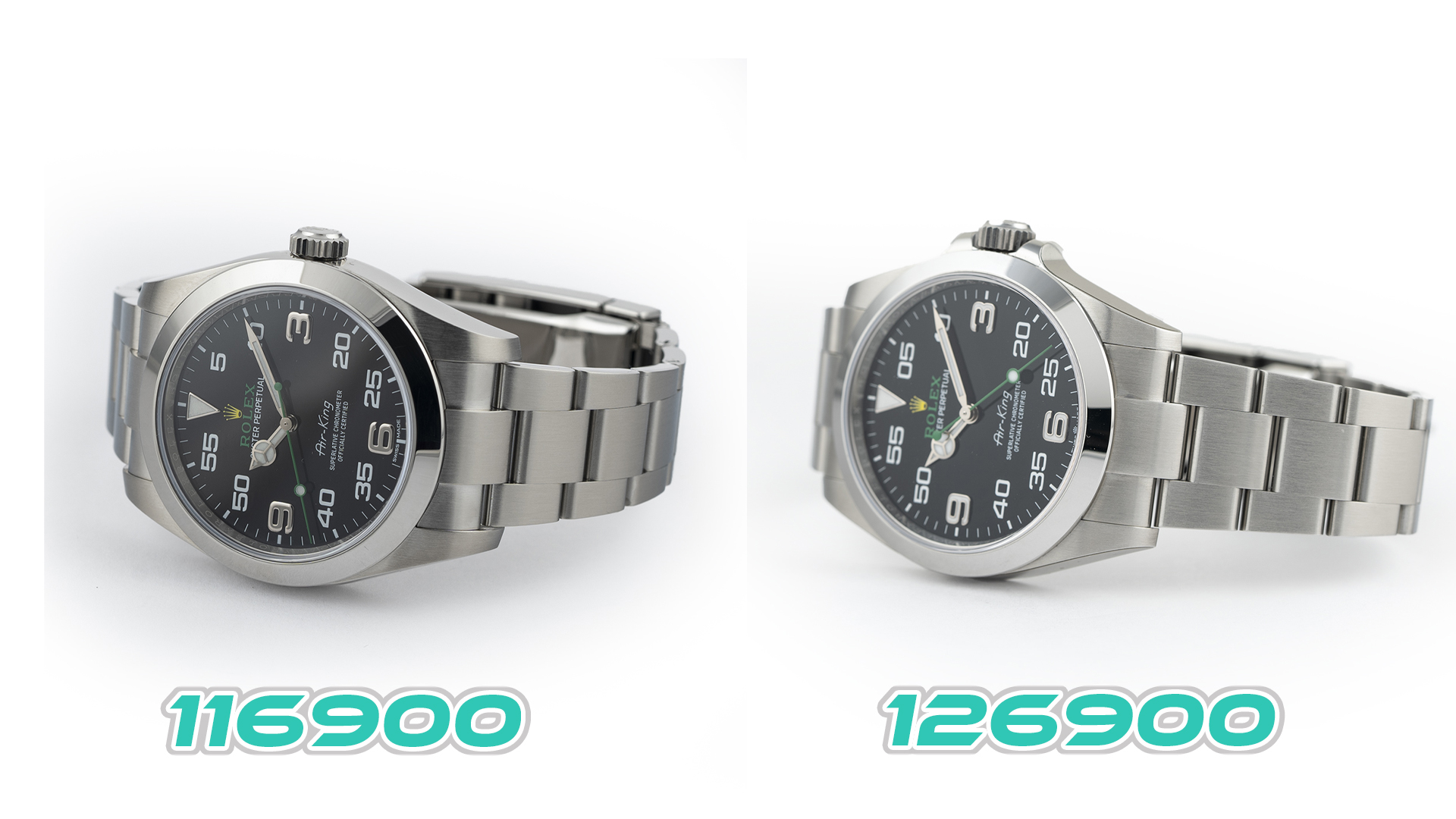
Key Differences Between Rolex Air-King 116900 and 126900
1. Case Design and Proportions
Both the 116900 and 126900 feature a 40mm Oystersteel case, crafted from Rolex’s proprietary 904L stainless steel, known for its corrosion resistance and polished finish. However, the 126900 introduces subtle but impactful changes to the case design:
- Crown Guards: The 126900 is the first Air-King to feature crown guards, giving it a more robust and sporty appearance compared to the unguarded crown of the 116900. This aligns the 126900 more closely with Rolex’s Professional series, like the Submariner.
- Case Shape: The 126900 has sharper, more angular case bands with flat surfaces, replacing the slightly rounded edges of the 116900. This modernizes the watch’s aesthetic and enhances its wrist presence.
- Lug-to-Lug Comfort: The 126900’s lugs are slimmer and more tapered, improving wearability for a broader range of wrist sizes.
Verdict: The 126900 feels more contemporary and aligns with Rolex’s current design language, while the 116900 retains a slightly softer, classic look.
2. Dial and Legibility
The Air-King’s signature black dial, inspired by the Bloodhound Super Sonic Car’s dashboard, features large 3-6-9 numerals, Arabic minute markers, and a green lollipop seconds hand. Both models maintain this bold, legible design, but the 126900 refines it:
- Dial Size and Proportions: The 126900’s dial appears larger due to a thinner bezel and re-dimensioned markers, improving legibility. The 5-minute Arabic numerals are slimmer, and the minute track is bolder, creating a cleaner look.
- Luminous Markers: The 126900’s 3-6-9 markers and 12 o’clock triangle are filled with Chromalight, Rolex’s long-lasting blue luminescent material, for enhanced low-light visibility. While the 116900 also uses Chromalight, the 126900’s application feels more refined.
- Text and Branding: Both dials feature a yellow Coronet, green Rolex text, and the “Air-King” script, but the 126900’s typography is slightly sharper, reflecting Rolex’s updated branding standards.
Verdict: The 126900 offers superior legibility and a more polished dial, making it ideal for pilots and everyday wearers alike.
3. Movement: Calibre 3131 vs. Calibre 3230
The movement is where the 126900 truly shines, showcasing Rolex’s advancements in horological technology:
- Calibre 3131 (116900): The 116900 is powered by the Calibre 3131, a self-winding movement with a 48-hour power reserve. It features a blue Parachrom hairspring, making it anti-magnetic up to 1,000 gauss, a nod to its shared DNA with the Milgauss. It’s COSC-certified, ensuring -4/+6 seconds per day accuracy.
- Calibre 3230 (126900): The 126900 houses the newer Calibre 3230, found in other modern Rolex models like the Submariner No-Date. It boasts a 70-hour power reserve, a Chronergy escapement for improved efficiency, and enhanced resistance to shocks and magnetic fields. Its accuracy is rated at -2/+2 seconds per day, reflecting Rolex’s Superlative Chronometer standards.
Verdict: The Calibre 3230 in the 126900 offers better performance, longevity, and precision, making it a significant upgrade over the 116900’s Calibre 3131.
4. Bracelet and Clasp
Both models feature the iconic Oyster bracelet with brushed flat surfaces and polished sides, but the 126900 introduces a key upgrade:
- Oysterlock Clasp: The 126900’s bracelet includes the Oysterlock folding safety clasp with a double-latching mechanism, a feature exclusive to Rolex’s Professional series. This enhances security compared to the 116900’s standard Oysterclasp.
- Easylink Extension: Both models offer the Easylink 5mm comfort extension link for on-the-fly adjustments, ensuring comfort in varying conditions.
Verdict: The 126900’s Oysterlock clasp adds a layer of sophistication and security, elevating the overall wearing experience.
5. Price and Market Positioning
On the secondary market, pricing reflects the models’ age and features:
- 116900: Available for around $9,500 USD in mint condition, the 116900 is slightly more affordable due to its older design and movement.
- 126900: Priced at approximately $10,000 USD new, the 126900 commands a premium for its modern upgrades and alignment with Rolex’s Professional series.
Both models are among Rolex’s most accessible sports watches, but the 126900’s enhancements justify the higher cost for those seeking the latest technology.
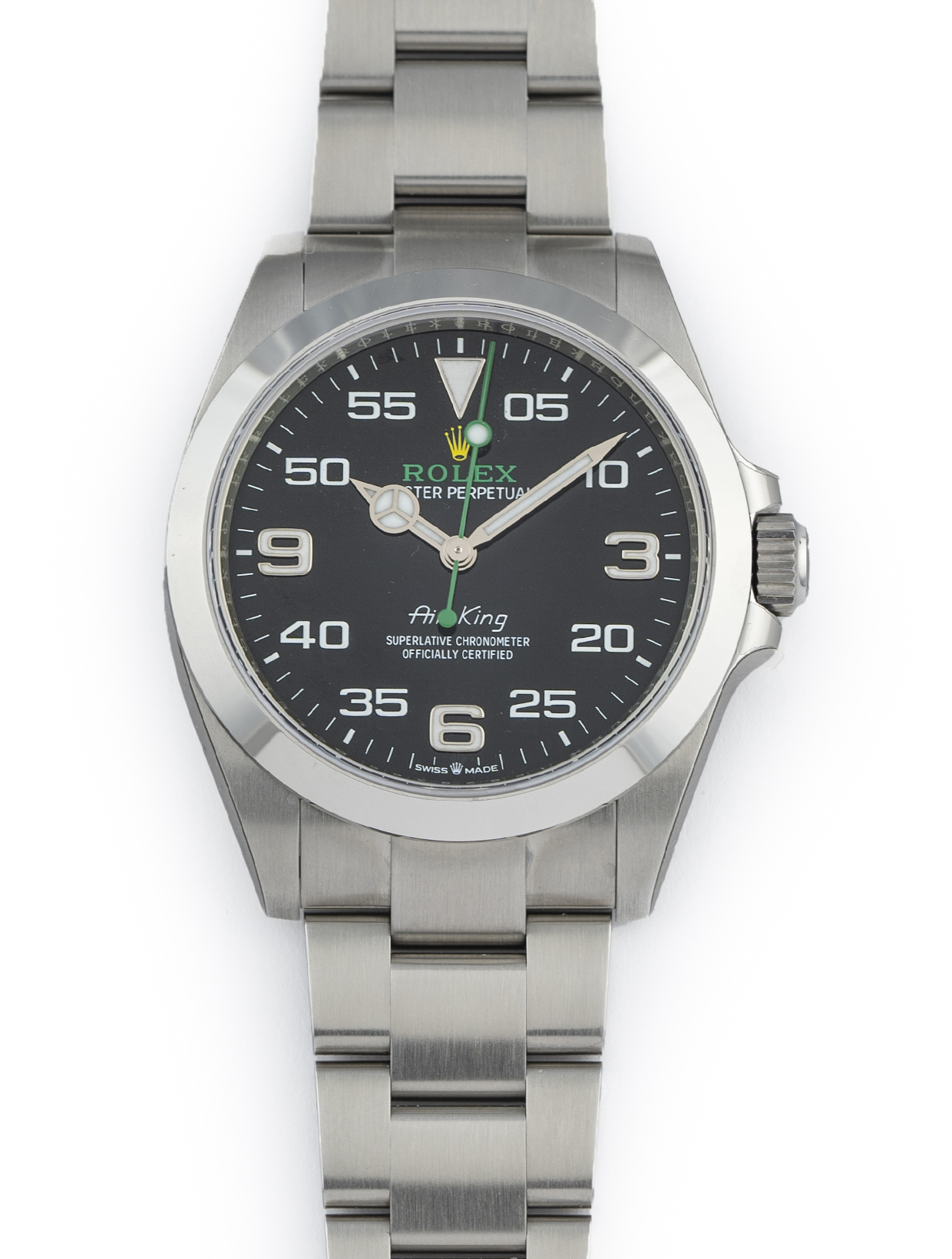
Which Rolex Air-King Should You Choose?
- Choose the Rolex Air-King 116900 if: You prefer a classic, slightly softer design without crown guards and are drawn to its anti-magnetic heritage tied to the Milgauss. It’s a great value for collectors who appreciate its unique place in Rolex’s history.
- Choose the Rolex Air-King 126900 if: You want a modern pilot’s watch with superior movement, refined aesthetics, and features like crown guards and the Oysterlock clasp. It’s ideal for those who prioritize performance and a contemporary look.
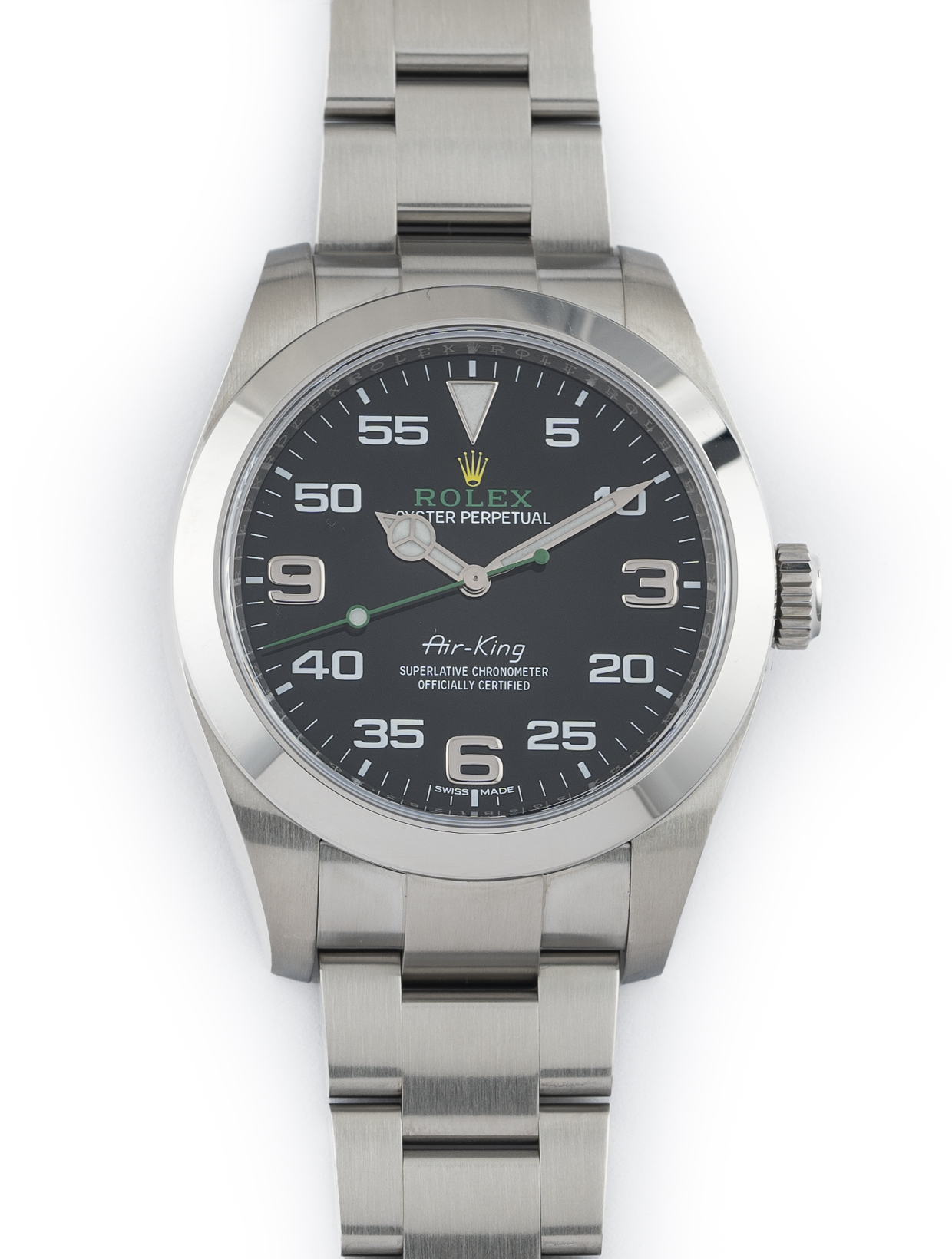
Why the Rolex Air-King Matters
The Air-King remains a standout in Rolex’s lineup for its blend of heritage and innovation. Both the 116900 and 126900 honor the brand’s aviation roots while offering distinct personalities. The 116900’s bold, quirky dial and anti-magnetic prowess make it a collector’s favorite, while the 126900’s refined design and advanced movement position it as a forward-looking icon.
Explore our in-depth reviews of the Rolex Air-King 116900 and Rolex Air-King 126900 for a closer look at these remarkable timepieces.
Conclusion
The Rolex Air-King 116900 and 126900 are two sides of the same coin, each offering a unique take on Rolex’s aviation-inspired legacy. The 116900 is a bold, anti-magnetic classic, while the 126900 elevates the line with modern refinements and superior performance. Whether you’re drawn to the heritage of the 116900 or the cutting-edge features of the 126900, both watches embody Rolex’s commitment to precision and style.
Ready to add an Air-King to your collection? Share your thoughts in the comments, and don’t forget to check out our detailed guides at Capturing Watches for more horological insights!
Let Capturing Watches Help Your Business Thrive
In today’s competitive watch market, standing out is crucial. At Capturing Watches, we specialize in expert watch photography, consulting, and optimization services tailored to your unique needs. Showcase your inventory with stunning visuals and optimized strategies to capture your audience and boost your sales.
Contact Capturing Watches today!
Disclaimer: Capturing Watches operates independently and is not affiliated with Rolex or any other luxury watch brands.
Share this blog
Facebook
Twitter
LinkedIn
WhatsApp
Email

